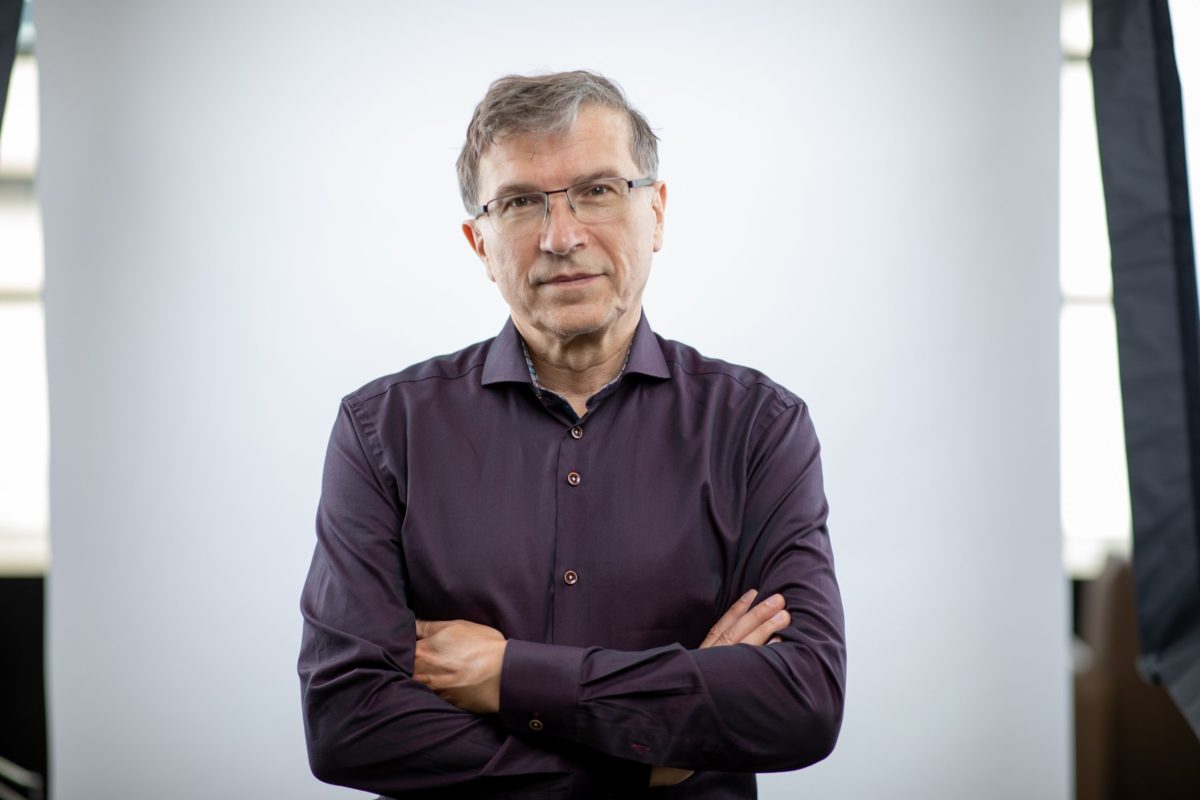Dr. Hance Clarke, holding a pipette of CBD, is looking at how medical cannabis products manage pain. (Photos: Tim Fraser)
How Sprott Surgery’s team is advancing the study of pain management and making the surgical experience safer
By Ben Waldman
As innovative as surgery has become, recovery from operations can still be painful. In the not too distant past, patients might have taken opium to quell their discomfort or drink a bottle of vodka before going under the knife. These days, anesthesia and postoperative pain management, have become more advanced, with doctors administering or prescribing everything from Tylenol to morphine to medical cannabis to help make patients more comfortable.
“The neurobiology of pain is consistent,” says Dr. Hance Clarke, an anesthesiologist and Director of Pain Services in the Department of Anesthesia and Pain Management and Director of the GoodHope Ehlers Danlos Clinic at Toronto General Hospital. “What has changed is the way we view it and the way we treat it.”
One lesson researchers have learned over the years is that an individualized approach to pain management and anesthesiology can drastically enhance a patient’s recovery. That’s why, after decades of research, doctors continue to search for more innovative ways to manage postoperative pain.
Finding opioid alternatives
Dr. Clarke has long been investigating how patients can better manage pain post-surgery. For years, opioids were the main therapy clinicians prescribed for treating post-surgical pain. While they are effective for controlling pain, they come with major risks for misuse and addiction. “One of the strongest predictors of whether patients will become addicted is the dose of opioids they are prescribed when they leave the hospital,” says Dr. Clarke, who says nearly 30,000 Ontarians exit hospitals with prescriptions of more than 100 milligrams daily. “With that kind of dose, it’s not going to be an easy road back to becoming opioid-free.”
In 2014, Dr. Clarke launched Toronto General Hospital’s Transitional Pain Service, a program that helps patients, most of whom have recently had surgery, wean themselves off excessive opioid medications. A multifaceted approach is used: patients are prescribed non-opioid therapeutics, and they also learn psychological techniques, such as mindfulness, and receive acupuncture from medical pain specialists. Doctors are also taught to prescribe fewer opioids. Many patients who enter into the program dependent on opioids as their primary mode of pain management no longer use them by the time they leave, he notes.
Dr. Clarke is currently conducting a first-of-its-kind evidence-based clinical trial involving medical cannabis and its use for surgical-related pain. He’s running the study, in partnership with Shoppers Drug Mart, to test whether medical cannabis can effectively manage pain and potentially replace opioids. “I want the data so we can use the right dosage, the right products and the right regimen to treat a condition,” explains Dr. Clarke.
Tech for keeping track
 “It watches over you,” says Dr. Ludwik Fedorko, whose DREAM machine ensures the right drugs are delivered and accurately documented during surgery.
“It watches over you,” says Dr. Ludwik Fedorko, whose DREAM machine ensures the right drugs are delivered and accurately documented during surgery.
While Dr. Clarke is focused on post-op pain, others at University Health Network (UHN) are trying to make anesthesia for surgery safer. In 2011, Dr. Ludwik Fedorko, an anesthesiologist and an early innovator in pain management, introduced the Drug Reconciliation and Electronic Anesthesia Monitoring, or DREAM, machine – a computer and barcode-aided system for drug administration that he invented – to operating rooms.
The DREAM system helps UHN anesthesiologists ensure they’re giving the right drugs to patients at the right time. Sometimes doctors might misread a drug’s label or give a drug at the wrong moment, which can lead to serious complications. “Humans are not machines,” says Dr. Fedorko. “We can make mistakes.”
The DREAM machine acts as a verification system. Before the anesthesiologist administers a drug, they scan the medicine’s bar code in front of the machine, which then tells everyone in the room, in real time and in a human voice, which medication the patient is being given. If the incorrect medication gets flashed, someone will be alerted before it’s too late. “It watches over you like a second person,” explains Dr. Fedorko. Since the system was introduced, there hasn’t been a critical intraoperative medication error.
Canada’s largest surgical program requires a best-in-class team of anesthesiologists and assistants who strive for excellence. “Our objective is to continue on this path of making the surgical journey as safe as possible for patients,” says Dr. Keyvan Karkouti, Anesthesiologist-in-Chief at UHN. “Along with our colleagues at Sprott Surgery, we must continue to advance practice through groundbreaking, innovative research and education activities.”
Pain problem
21,000 Opioid-related overdoses in Canada in 2019 (Source: Government of Canada)
This article originally appeared in the Sprott Department of Surgery magazine.
